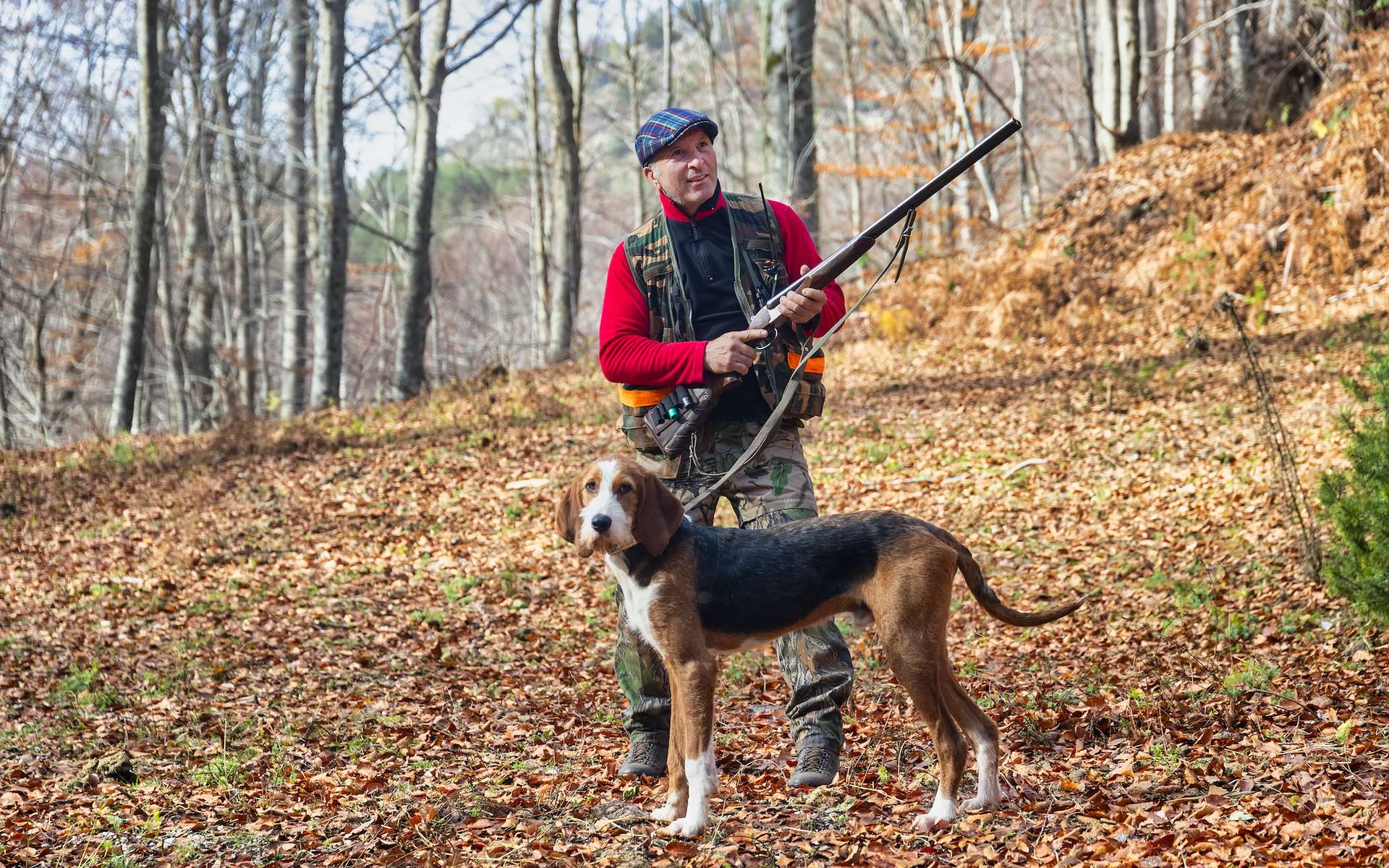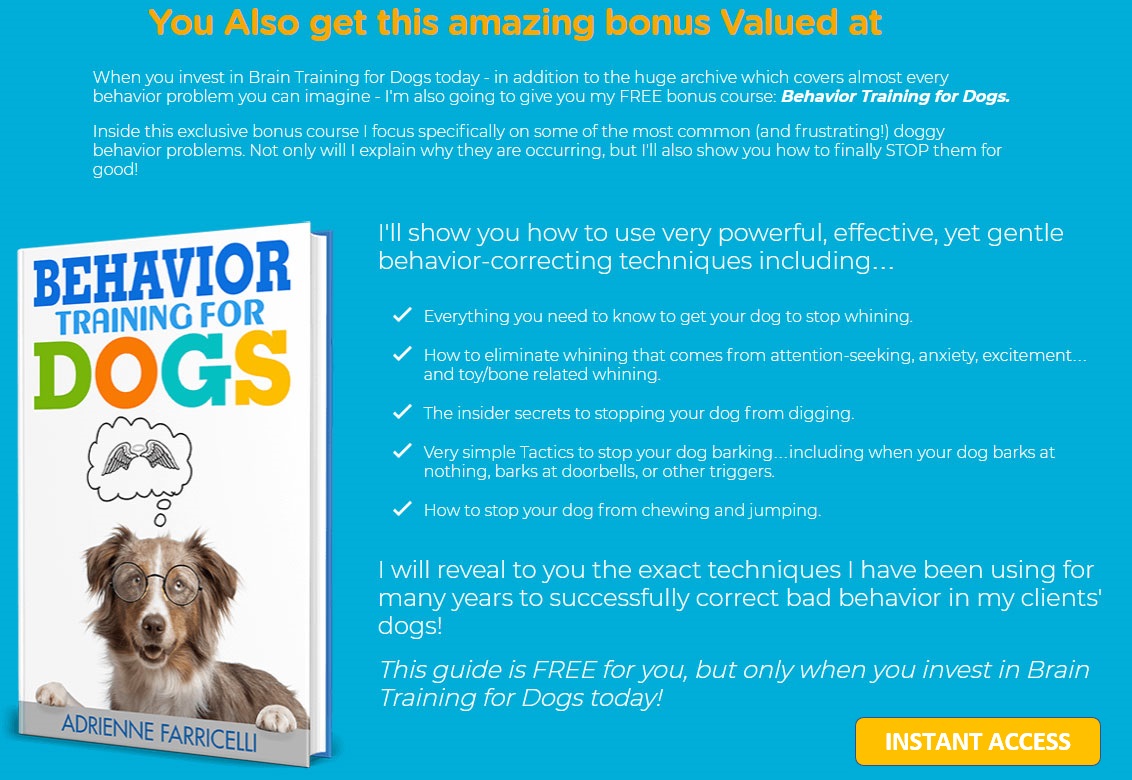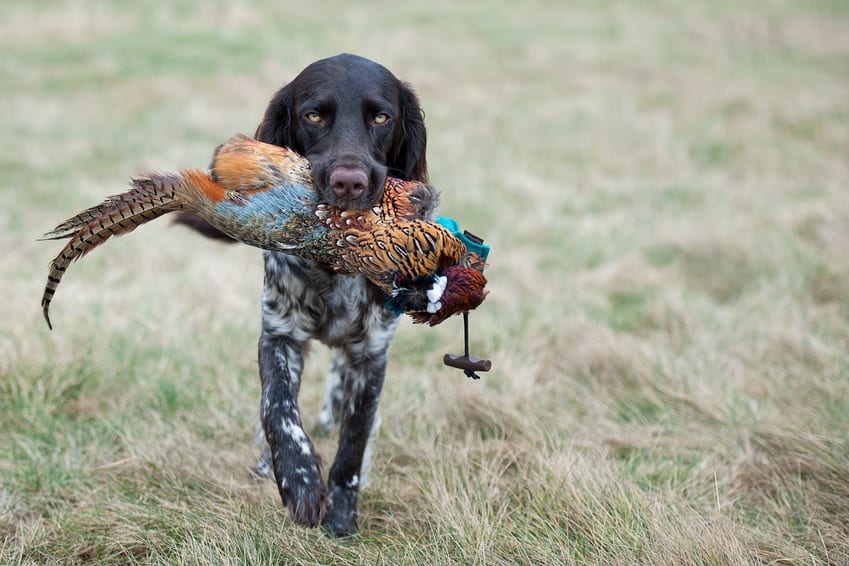Hunting dog training
Training your dog for hunting is a great responsibility for every owner. It requires much more than passion. It takes time and a lot of patience. This training requires a lot more techniques than a basic training like "sit" or "stay" for example.
I can see you from here (yes, I can) and I can feel you full of hope when you look at your companion. And you are right. No dog is born with a game in its mouth and all hunting dogs have been through the training process. Enough said. How about I tell you how to train your dog for hunting? 3, 2, 1, go!
To know before starting the training
You won't train your dog to hunt in a snap (unless you are Mimi Mathy). Otherwise it would be too easy and you wouldn't be reading me and that would be a shame, right? So I'm going to give you some tips and tricks to prepare your dog for hunting training.
First of all, hunting can be dangerous for a dog that doesn't obey his master. As a hunter, you should know this. Having an adult dog does not mean having an obedient and trained dog. You will have to start by teaching him the basic commands. This is more than important, it's mandatory.
Many people say that training an adult dog is doomed to failure and is more difficult. I don't agree. I really don't. Even if your dog has bad habits, he can still be trained. Besides, in my experience, an adult dog is much more attentive than a puppy.
And you'll find that you'll eventually be able to train your adult dog more easily than you would a puppy for hunting. And even as an adult, you can still teach him the basic commands.
For training, do not use violence, no electric collar, no choke chain and so on. Discovery, pleasure and rewards should be his only motivations for going hunting.
Don't go too fast and don't burn out the stages. It's no use. All you will gain by trying to outrun the hare is that your dog will never be trained to hunt.
These tips seem very simple and obvious. But they are not, and it is important to follow them so that everything goes smoothly and your dog is not put at risk.

The steps to train an adult dog for hunting
Now we're getting to the heart of the matter. Be sure to follow these steps and my advice on how to successfully train your adult dog. Each step is important and should not be overlooked. A forgotten step, a step done in haste, a step not studied enough with your dog and it's a sure failure.
Breaking in: an essential step
If your adult dog is a broken-in dog, you are lucky and you will save time. If not? It's not dramatic either. But you're going to have to work at it. A broken-in dog is a dog that has been trained without restraint. He must be able to hold a stop on any game, without being wise to the flight and fire. You will therefore have to put him in the presence of game (pigeons, quails, partridges, pheasants) to familiarize him. During this stage, your dog must learn to obey your voice, but also the whistle.
The retrieve
If you don't do this step, know that your dog won't bring anything back or worse, he'll have fun or chew the game. This is a long and delicate step that can take from 5 to 6 weeks with regular training. It is necessary to advance step by step. Throughout this period, he should learn three words: "take", "carry" and "give". You should only move on to the next step if he has mastered these commands. My advice is to first force him to take a piece of log in his mouth and hold it, first when standing still and then when walking. He should only let go of the piece of wood when you give him the command "give". Repeat the session as many times as necessary. As soon as it is acquired, put the piece of wood on the ground and gradually move it away until you throw it far away. And of course, when this technique is acquired, replace the piece of wood.
The shot
The test of fire consists in first getting your dog used to the shots, but also in having him learn to associate the detonation with the command. I suggest you start by using a cap gun. It's not dangerous and it's super effective. Your dog needs to get used to the noise and learn not to flinch. As he learns, he will have to learn that a shot corresponds to a falling bird or a game to bring in.

Other ways to train your dog to hunt
When I talk about training your dog in basic commands, I would advise you to do it yourself with your eyes closed. For hunting training, I would advise you to get help in different ways.
First, with books or DVDs. Frankly, they are precious allies and you can learn a lot of things, even everything you need to know to properly train your dog for hunting. The methods are well explained, well detailed.
If you want to give yourself the best chance, give your dog to a professional trainer. The duration of the training depends on the character of your dog. It is expensive, I admit, but the result is clear.
At the end of the training period, your dog can accompany you on the hunt. And even cook the game. OK, I'm exaggerating and I'm dreaming, but nobody is better placed than a professional to train your dog for hunting.
Conclusion
It is well known that hunting training is one of the most difficult. Your dog has to learn so much, has to assimilate many commands and postures. And you will have to be patient, motivated and form a real team with your hunting companion.
Take your time, go step by step, clean your gun and put in some RTT, because I'm sure you'll be able to train your dog for hunting!


